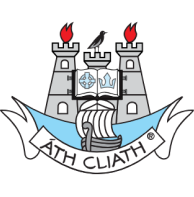Head of Hurling William Maher has also released the below letter ahead of the Roadshow.
Dear All,
A sincere thank you to everyone who participated in the HDC Hurling Roadshows over recent weeks. The six events provided a unique and honest opportunity to hear directly from those on the ground — coaches, officers, teachers, referees, and Games Development staff — about what’s working, where the challenges lie, and what’s needed to take hurling forward.
Your feedback was consistent, passionate, and constructive. It is already shaping the next phase of national hurling planning and will directly inform our forthcoming National Hurling Action Plan, which we are building together.
Key Themes Emerging Across the Roadshows:
A clear need for targeted support across different county contexts — one size does not fit all.
Strong emphasis on schools as a growth driver — particularly primary and second-level engagement.
The importance of building referee development pathways to support a meaningful games programme.
Support for greater alignment across school, club and inter-county activity, especially in how academy players are developed and retained.
The need for more joined-up planning between counties, provinces, and national Games Development to ensure sustained impact.
Strategic Structure: A Tiered Approach to Hurling Development
Based on feedback, the Hurling Action Plan will be structured around three strategic county groupings, each with a tailored focus and support model:
1. Traditional Hurling Counties
Objective: Maximise the retention and progression of academy players into high-performing club and inter-county systems.
Key Focus Areas:
Player development programmes that retain and challenge talented players through their teenage years
Refined academy models with clear links to senior club and inter-county environments
Coach education and mentoring that targets elite and sub-elite performance environments
Monitoring and support for performance targets across club, schools, and inter-county
2. Middle-Tier Hurling Counties
Objective: Significantly grow participation and improve the transition of players into structured, meaningful club and school-based competition.
Key Focus Areas:
Clear participation targets at U7–U15 to widen the base of the pyramid
Integrated club–school–county games programmes
Targeted support for key second-level schools to grow team numbers and competitive games
Coach development initiatives that grow club capacity and enhance player experience
3. Non-Traditional Hurling Counties
Objective: Establish and embed hurling in schools and Go Games programmes, driven locally through Games Development staff.
Key Focus Areas:
Primary school initiatives as the foundation for growth
County- and club-led Go Games programmes supported by Games Managers and Provincial GDA teams
Simple, clear coach support programmes for early-stage clubs
Visibility and integration with national campaigns (e.g. Hurling for All, #ClubIsFamily)
Immediate Priorities (Summer–Autumn 2025)
This is a key moment. The game needs a clear, ambitious, and deliverable plan — and now we have a strong foundation, built from your feedback, to deliver one.
Thank you again for your time, energy, and honesty in this process.


:format(auto))
:format(auto))
:format(auto))